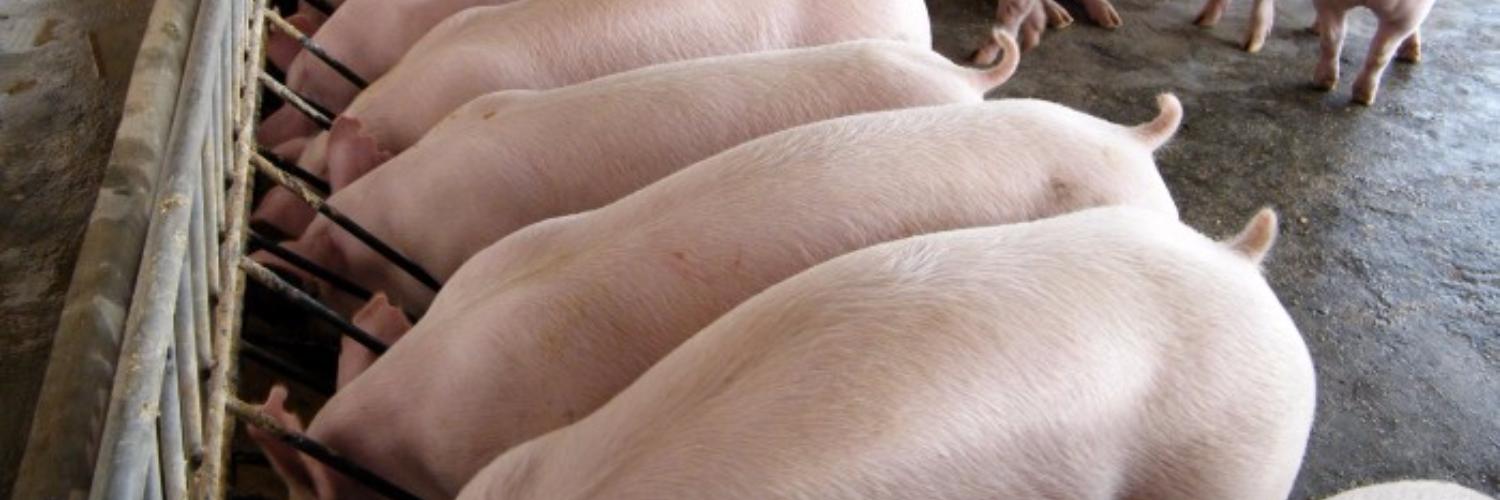The goal of effective pig production is to maximize the growth. This can be achieved by introducing specific substances in the diet for pigs, but it is worth keeping in mind that the pledge of good performance indicators is:
- A properly balanced diet;
- Management on the farm;
- Animal health status;
- conditions of detention.
The most important role is performed by the management of the pig farm. Factors such as health status,the presence of specific diseases,animal ownership,sanitation, environmental control and the effects of diseases have a significant impact on the rate of growth and consumption of feed.
Inclusion of antimicrobial substances in raw materials is the most common method of stimulating growth at very low levels. Such growth promoters at very low levels have the effect of reducing the activity of microorganisms in the intestine, which increases the absorption of nutrients in the intestine and suppresses any harmful products of bacterial metabolism.
What is the effectiveness of growth stimulants?
Summary of data for the last 15 years shows the following:
- Improve the average daily weight gain to 4%;
- Improve daily feed intake by 0.2-1.4%;
- Improve conversion by 2.5-3.9%.
However, the more effective the feeding and the healthier the flock, the greater the effect.
Licensed growth stimulants typically have a minimal elimination period and most of them have antibiotics that have little or no therapeutic effect on the pig or are not used in medicine. There are exceptions, for example, tylosin.
Required characteristics of a growth stimulant:
- They should not be accumulated in the intestines or edible tissues;
- Must not be toxic to humans and animals;
- The use should be economically conditioned;
- There should be no side effects to other antibiotics;
- Should not be labeled therapeutic value in medicine;
- Do not change normal bacteria in the intestine or stimulate certain bacteria (eg, salmonella);
- Do not pollute the environment and must quickly decompose in it;
- Should not increase the resistance of bacteria to drugs or be involved in the transfer of resistance to drugs from one species to another.
But,tilozin, Spiramycin, Zinc bacitracin, Virginiamycin, karʙadoks and olaquindox currently are currently prohibited In the European Union in order to stimulate growth.
Available types of growth stimulants
- Antimicrobial growth stimulants (antibiotics)
- Acidifying agents
They are used to reduce the pH of the intestinal contents or they have a weak antibacterial effect. The first include acids such as lactic, citric, fumaric, malic, the second - acetic, propionic and formic acids.
- Mineral clays (adsorbents)
These are drugs that can absorb toxins from the digestive system, which can stimulate the development of pathogenic bacteria.
- Enzymes
There are many different enzymes in the body. It is difficult for an organism of pigs to split complex cellular structures, especially in wheat. Enzymes are designed to help in the destruction of fibers, as well as improve the efficiency of digesting plant proteins. Each enzyme is specific in its action.
Digestion of fiber is enhanced by carbohydrates, such as beta glucanases or xylanases, which act on fibers such as arabinoxylanobi beta glucans. Such fibers contain anti-nutrients, which are also found in proteins.
- Fermentation
Liquid feeding provides the opportunity to create an acidic environment by fermentation and inclusion of certain microorganisms, for example, Lactobacillus, which in the intestine hinders the development of pathogenic microflora, and also increases the digestibility of feed.
- Salts of metals
The use of copper as growth stimulants is well researched. Zinc oxide proved to be very effective in preventing diarrhea during weaning.
- Nutricevtiki
These are substances that are released from certain plants and their effectiveness has not been fully proven. For example, fatty acids and plants with high levels of vitamin E can increase the effectiveness of the immune system. Often used substances from garlic, ginseng, oregano, cinnamon, anise, rosemary, mint, and propolis are often used.
- Probiotics
It is by nature a living bacterial and yeast culture that is added to the feed. Their efficacy has not been accurately studied and is presumably most effective in young growing pigs.
Table 1. Effectiveness of feed additives as growth stimulants
| Feed Additive | Efficiency |
|---|---|
| Antibiotics | +++++ |
| Copper sulphate | +++ |
| Enzymes | +++ |
| Fermentation | ? |
| Immunoglobulins | ++ |
| Lactose | ++ |
| Mineral clays | ? |
| Organic acids | + |
| Probiotics | + |
| Zinc oxide | ++++ |
Table 2. Available growth stimulants and supplements
| Active substance |
The dose of the active substance, grams / tonne |
Some trade names | Comments |
|---|---|---|---|
| Alpha-amylase | According to instructions | Kenzyme | Power Amplifier |
| Flavors | 100 | Crina | Power Amplifier |
| Avilamycin | 10 — 40 | Maxus |
20-40 g to 4 months of age 10-20 g to 4-6 months of age |
| Types of Bacillus | According to instructions |
Paciflor Kenzyme |
Bioregulator |
|
Bacillus subtilis Bscillus licheniformis |
— | Biogrow | Enzyme production |
| flavomycin | 10 — 20 | Flavomycin | Up to 6 months of age |
| Beta-glucanase | According to instructions | Allzyme BG | Digestible enzymes |
| Beta-glucanase | According to instructions | Porzyme | Activation of the enzyme |
| Karʙadoks | 15 — 30 | Carbadox | Not allowed in the EU |
| Cellulase | — | Hostazyme | Digestible enzymes |
| Cellulase | According to instructions | Roxazyme | Activation of the enzyme |
| Chlortetracycline | 10 — 55 | Aureomycin | Not allowed in the EU |
| Copper carbonate | 100 - 175 (copper) | Castor Ltd. |
To 100 g piglets weaning 175 g - up to 17 weeks of age |
| Copper sulphate | 100 - 175 (copper) | Castor Ltd. | To 100 g piglets weaning |
| Copper oxide | 100 - 175 (copper) | Castor Ltd. | 175 g - up to 17 weeks of age |
| Enterococcus faecium | — | Cylactin | Amplifier of intestinal flora |
| Fl-fosfolypol | 1 - 25 g | Flaveco (40) | |
| Fl-fosfolypol | 1 - 20 g | Flavomycin (80) | |
| Proteolytic fungi | — | Allzyme PF | Digestible proteolytic enzymes |
| Inactivated E. coli | According to instructions | inmates | |
| L-carnitine | According to instructions | Carnifeed | The metabolism enhancer |
| Lincomycin | 20 | Lincomix | Not allowed in the EU |
| Mannan-oligosaxarid | According to instructions | Bio-Moss | Strengthens intestinal immunity |
| olaquindox | 15 — 100 | Enterodox |
Up to 4 months of age Not allowed in the EU |
| Organic acids | — | Acid-Pak | Organic acidulant 2.5 kg / tonne |
| Organic acids | — | Aciprol | Food acidiulent 1-4 kg |
| Organic acids | — | Lupro-mix | Food acidiulent |
| Organic acids | According to instructions | Sal-Zap | Control of salmonella |
| oxytetracycline | 10 — 55 | Terramycin | Not allowed in the EU |
| Milk streptococcus | — | Bactocell | Milk acidiulent |
| Xylanase | — | Allzyme PT | Digestible enzymes |
| Fitan | According to instructions |
Innozym Phytase |
Activation of the enzyme |
| Procaine penicillin | 10 — 50 | Not allowed in some EU countries | |
| Propionic acid | According to instructions | Salcurb | Control of salmonella |
| Types of Saccharomices cervisiae | According to instructions |
Thepax Diamond Yea-sacc Biosaf Biosprint |
Intensifying digestion |
| salinomycin | 15 — 60 | Salocin |
Pigs up to 40 kg - 30-60 g Pigs for slaughter - 15-30 g |
| Sanquinara | According to instructions | Sangrovit | Stimulant of digestion |
| Spiramycin | 5 — 80 | Spira | Not allowed in the EU |
| Tiamulin | 10 | Tiamutin | Not allowed in the EU |
| Tilozin | 10 — 40 | Tylan |
40 g to 4 months of age, after - 20 g Not allowed in the EU |
| Virginiaamycin | 5 — 50 | Stafac |
50 g to 4 months of age, after - 20 g Not allowed in the EU |
| Xylanase | According to instructions | Wheat zyme | Activation of the enzyme |
| Xylanase | According to instructions | Safizyme | Activation of the enzyme |
| Yucca extract | 120 | De-Odorane | Reduction of ammonium content |
| Zinc bacitracin | 5 — 50 | albac |
5-50 g to 6 months of age Not allowed in the EU |
A source:thepigsite.com
Transfer:ciab.expert




